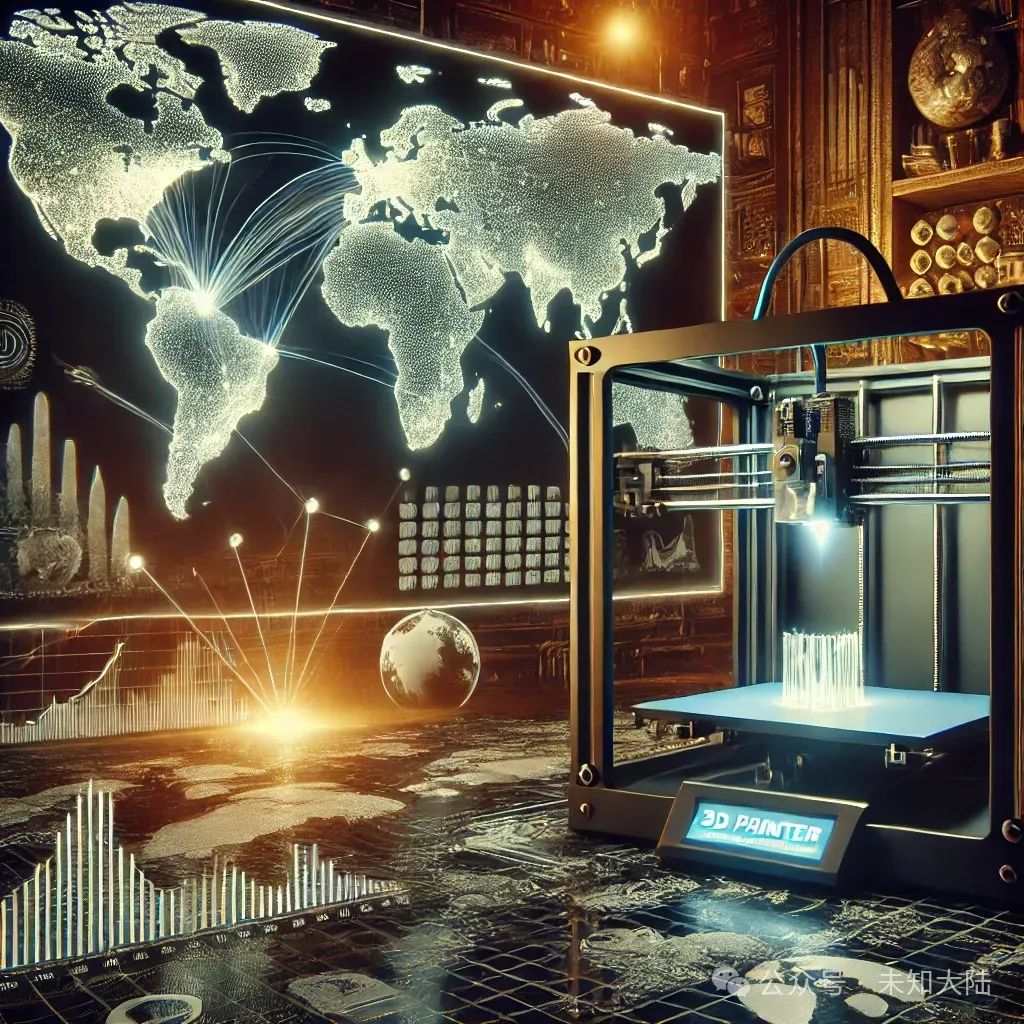3D printing technology, which began as an additive manufacturing experiment in the 1980s, is no longer a whimsical idea confined to laboratories but has become an industrial storm sweeping across the globe. It is reshaping the landscape of manufacturing, healthcare, construction, and even geopolitical economics at an unexpected speed and depth. However, the current world of 3D printing is not without its challenges—technological bottlenecks, capital games, and regional competition are quietly rewriting the rules. This article will provide a sharp perspective on how 3D printing has transitioned from the periphery to the core of disruption and reveal the astonishing possibilities of the future landscape.

1. Current Situation: The “False Prosperity” and Real Potential of 3D Printing
On the surface, 3D printing seems to have entered a golden age. The global market size is expected to approach $20 billion by 2024 and exceed $50 billion by 2030. Aerospace giants like Boeing are using it to manufacture lightweight components, the medical field is printing personalized prosthetics, and even the construction industry is beginning to build entire houses with 3D printing. China, the United States, and Europe are competing to invest, with policy support and corporate innovation emerging continuously. However, hidden behind this prosperity are crises: the level of technology adoption is far below expectations, material costs are high, and printing speed and accuracy remain limited. Many companies are mired in “concept hype,” with inflated market values and a lack of actual applications.
But this is precisely the charm of 3D printing—it has never been overestimated, but rather underestimated. It does not simply replace traditional manufacturing; it redefines the logic of production. Traditional manufacturing relies on economies of scale, while 3D printing excels in personalization and complexity; traditional supply chains are constrained by global division of labor, while 3D printing makes “localized manufacturing” possible. This disruptive potential is quietly changing the world landscape.
2. Regional Competition: Who Will Dominate the Future of 3D Printing?
The global competition in 3D printing has reached a fever pitch, with major economies fiercely competing in technology, capital, and policy.
1. United States: Technological Hegemony and Capital Drive
The United States, with its first-mover advantage and technological accumulation, remains a leader in 3D printing. From Stratasys to 3D Systems, American companies dominate in high-end equipment and software algorithms. NASA has even used 3D printing for manufacturing components for Mars bases, showcasing the foresight of the technology. However, the U.S. has weaknesses in high costs and a lagging market, with the adoption rate among small and medium-sized enterprises far below expectations. The short-term profit-seeking mentality of the capital market has also led many startups to be short-lived.
2. China: Scale Rise and Policy Reinforcement
China’s 3D printing industry is catching up at an astonishing speed, with the market size accounting for a quarter of the global total by 2024. Companies like Plustech and Xianlin 3D have rapidly emerged, and the government has injected massive funds through policies like “Made in China 2025,” particularly in aerospace and healthcare, achieving a leap from imitation to innovation. China’s advantages lie in supply chain integration and cost control, but it still relies on imports for core materials and high-end equipment, with the “last mile” of independent innovation yet to be overcome.
3. Europe: Sustainability and Precision Manufacturing
Europe, centered around Germany, focuses on the sustainability and high-end applications of 3D printing. Giants like Siemens are integrating 3D printing into Industry 4.0, emphasizing energy efficiency and the circular economy. The Netherlands leads globally in 3D printing construction experiments and bioprinting technology. However, Europe’s fragmented market and conservative policies limit its scalable development, making it difficult to compete with China and the U.S.
4. Emerging Players: Ambitions of India and the Middle East
India and the Middle East are becoming dark horses in 3D printing. India is leveraging its low-cost labor and IT advantages to lay out 3D printing in healthcare and consumer goods. Middle Eastern countries like the UAE are using oil capital to invest in large 3D printing projects, such as Dubai’s “3D Printing City” initiative. Although these emerging forces started late, their flexibility and regional demand may lead to unexpected breakthroughs.
The core of this regional competition is that 3D printing is not only a technological contest but also a comprehensive battle of resources, policies, and market demands. The future landscape will depend on who can first break through the bottlenecks of materials and speed and achieve a leap from “high-end customization” to “mass production.”
3. Technological Breakthroughs: From Bottlenecks to Singularity
The true revolution of 3D printing has yet to arrive, but the sparks of technological breakthroughs have already been ignited.
1. Material Revolution: From Plastics to Everything
Currently, 3D printing materials are primarily plastics and metals, with high costs and limited varieties constraining applications. Future breakthroughs lie in multi-material printing and smart materials. In 2024, MIT developed 4D printing materials that can adapt to their environment, signaling a leap in materials science. In the field of bioprinting, live tissue and organ printing have entered clinical trial stages. Imagine when 3D printing can freely combine metals, ceramics, and even biomass, the boundaries of manufacturing will be completely shattered.
2. Speed and Scale: From Prototyping to Mass Production
Speed is a critical shortcoming of 3D printing. The layer-by-layer accumulation model of traditional printers is inefficient and cannot meet the demands of large-scale production. However, the technological trends for 2025 are already revealing clues: Continuous Liquid Interface Production (CLIP) and multi-beam laser sintering technology have increased printing speeds by more than ten times. Combined with AI-optimized design, 3D printing is transitioning from “prototype manufacturing” to the era of mass production.
3. Software and Ecosystem: The Invisible King of Digitalization
The future of 3D printing lies not only in hardware but also in software and ecosystems. Cloud-based modeling platforms, AI-driven topology optimization, and blockchain-certified digital supply chains are evolving 3D printing from standalone operations into a complete intelligent manufacturing system. In 2024, the 3D printing design platform launched by Adobe and Autodesk has enabled small and medium-sized enterprises to enter the market at low costs. This “soft power” will become a key factor in determining the landscape.
4. Disruptive Scenarios: How Will 3D Printing Reshape the World?
The true power of 3D printing lies in its reconstruction of society, economy, and even geopolitics. The following scenarios may become a reality within the next decade:
1. De-globalized Manufacturing
The fragility of global supply chains was exposed during the pandemic, and 3D printing offers an alternative. Companies no longer need to rely on multinational logistics; with just a printer and a digital model, local production can be achieved. This will weaken the advantages of traditional manufacturing powerhouses and reshape the global trade landscape. Emerging markets like Vietnam and Mexico may rise, while traditional exporting countries like China may face challenges.
2. Medical Revolution
3D printing is enabling healthcare to transition from “standardization” to “personalization.” From customized prosthetics to 3D-printed medications, and even implantable living organs, the efficiency and accessibility of the healthcare industry will significantly improve. Developing countries may quickly narrow the healthcare gap with developed nations through low-cost 3D printing technologies.
3. The Cornerstone of Space Colonization
Space exploration is the ultimate stage for 3D printing. NASA and SpaceX have already used 3D printing to manufacture rocket components, and in the future, lunar or Martian bases may directly print habitats using local resources. This capability of “on-site manufacturing” will make human colonization of space a reality.
4. Democratization of Consumer Goods
3D printing allows everyone to become a “maker.” From personalized jewelry to custom furniture, consumers will shift from passive acceptance to active design. The rise of open-source communities and maker culture may foster a decentralized production network that challenges traditional retail giants.
5. Risks and Reflections: The Double-Edged Sword of 3D Printing
The potential of 3D printing is exciting, but its risks cannot be ignored. First, intellectual property protection will face unprecedented challenges—the dissemination of digital models may lead to rampant piracy. Second, 3D printing may exacerbate unemployment crises, as traditional manufacturing workers may be replaced by automation. Additionally, low-cost printing technologies could be used to manufacture weapons or hazardous materials, increasing regulatory difficulties.
Deeper issues arise as 3D printing may exacerbate global inequality. Wealthy countries may use technological advantages to consolidate hegemony, while poorer countries may be further marginalized due to a lack of infrastructure. How to make 3D printing an inclusive technology is a challenge for all humanity.
6. Conclusion: The Singularity of 3D Printing is Approaching
3D printing is not a fantasy of the future but a revolution happening now. It is growing from a peripheral technology into a mainstream force, redefining the rules of production, consumption, and competition. In the next decade, whoever can master the core of materials, speed, and ecosystems will dominate the next wave of global manufacturing.
However, the true reshaping of the landscape does not lie in the technology itself but in how humanity harnesses it. 3D printing can be a tool for liberating creativity or a weapon for exacerbating inequality. At this historical turning point, we need not only technological breakthroughs but also global collaboration and forward-looking governance. The world landscape of 3D printing will ultimately be shaped by our choices.
